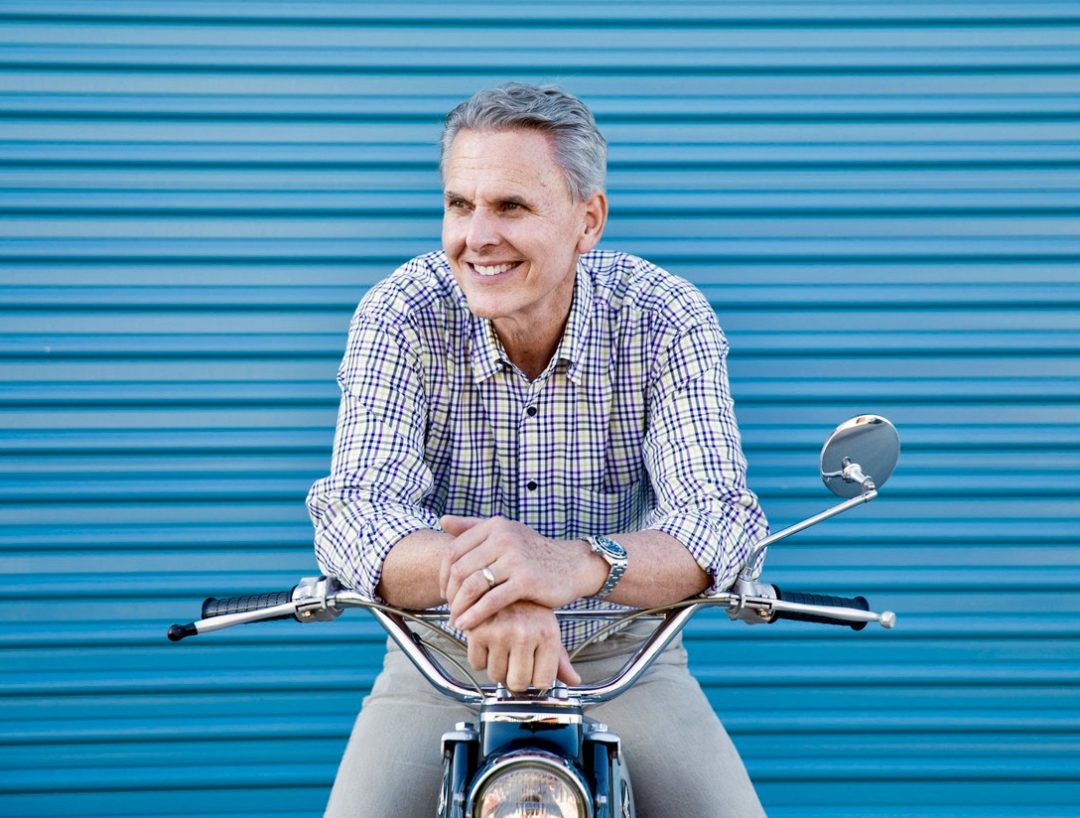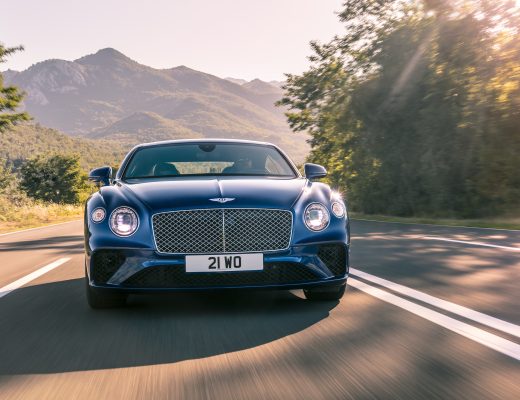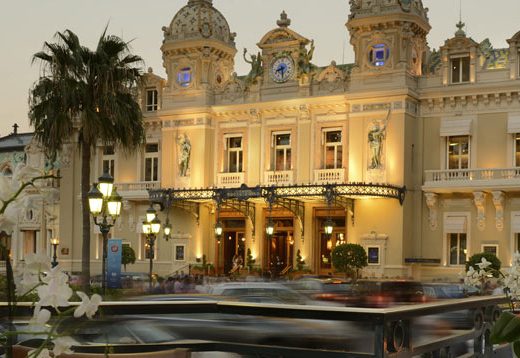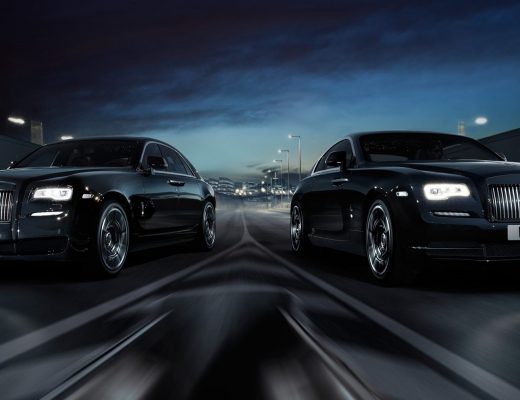Featured Image Credit: Angela Decenzo, provided courtesy of Gordon McCall
On a warm, June afternoon in Monterey, California we were given the privilege of interviewing one of the Automotive and Motorcycle world’s most interesting personalities. “The location for this interview?” you may ask. It is what appeared to be a humble storage unit, however it ended up being anything but. As the door opens to this metal building, you are greeted by an expansive automotive paradise. If you haven’t already guessed, this hideaway is the refuge of none other than Gordon McCall, the man whose ingenuity made Monterey Car Week into what it is today.
With a passion for automobiles and motorcycles that is seemingly endless, McCall’s imagination and painstaking work have given life to not only some of greatest automotive gatherings of our era, but also to the world of modern automotive auction photography. Having began his career as a teenager sweeping the floors of a local Ferrari dealership, the Carmel native who previously headed Christie’s Auctions Automotive division has risen to be one of the must know individuals in the car and motorcycle industries. Worlds which few individuals seldom inhabit simultaneously.
His passion, you may ponder? Not just mind blowing hyper cars and tasteful classics, but items rich in meaning and provenance. We were given the exclusive privilege to chat with Gordon at his breathtaking hideaway, which houses not only some immaculate cars, but also over 20 motorcycles. Read on to get to know the man that – gave life to the Hangar Party, advised Bentley on paint work, and is soon to be one of the automotive world’s most entertaining television hosts.
The name McCall is quintessentially synonymous with Motorsports in Central California. With that said, can you tell us a little bit about your background with cars and your relationship with Monterey Car Week?
“Well I think, like a lot of car enthusiasts, you get the bug when you’re young. I lost my dad when I was eight and most guys I know that are into cars got it from their father or grandfather, something they hung out in the garage and spent time fiddling with cars over. I didn’t have that in my youth, but what I did have was a mom that understood that I loved Corgi Toys. And she managed to, every birthday, Christmas, Easter, you name it, whatever the occasion was, I always got Corgi Toys. Not sadly or pathetically, but I still have them. Those little cars: the little Aston Martins, Ford GTs, MGB GTs, the Jaguar E-Types… Those little cars clearly planted a seed with me in my youth. I don’t know how old I was, seven/eight years old, or somewhere in that neighborhood, cars and sports were the two things I cared about the most. And I am grateful that my mom was able to kind of keep me in cars to the point where I ended up, you know, with a career. So, Car Week is a bit of an unintended consequence for me, you know, being from here. Car Week [has] always [been] going on in my life, since the early ’50s, when they first started running the track, before I was born, before Laguna Seca was built. Actually, I am as old as Leguna Seca; it was built the year I was born. I would get dropped off at the track in the ’60s; my mom would drop me off at the bottom of Highway 68 and I would walk into the Can-Am Races as a kid. That’s back when you could do that with your kids, I just had to be back on Highway 68 at dusk. So, I did not know it was Monterey Car Week at the time—I really didn’t. Actually, we can credit the Pebble Beach Concours [with starting Monterey Car Week], but before the Pebble Beach Concours [there] were the Pebble Beach Road Races. So, it’s actually racing that started all this. Steve Earle, in 1974, brought vintage racing to Laguna Seca. I was going to Carmel High School at the time [and] I was a volunteer out of the gas station there, which was a Union 76 station. I used to pump gas into race cars. I was just mesmerized by the whole process to the point where I started volunteering my time as a Junior at Carmel High School. I started volunteering my time as a field crew volunteer at Pebble Beach and a good friend of mine, who is now the Chief Judge at Pebble Beach, Chris Bock kind of kept me on board. He saw that I was an enthusiast when it came to cars and I ended up working my way up the ranks. After 28 years, I ended up as a judge [at the Pebble Beach Concours d’Elegance], which is when I collaborated with [The Honorable Sir] Michael Kadoorie to create the Quail.”
Is there a particular place that you trace your passion for automobiles and motorcycles to? Was it an encounter with them in your childhood, or through family or friends?
“Going back to my response to the first question, I trace it probably to the carpet in my mom’s house. Between my Hot Wheels, HO Slot Cars, Corgi Toys, Matchbox toys, Dinky Toys—I think just being around it, being interested in how things work. I mean, I’ve still got a ’64 Corvette Stingray Corgi Toy that’s kind of a maroon color; the wheels are painted white and I realize I did that when I was like eight years old. So, technically I have been modifying cars since I was [a kid]. As far as where that started, definitely then. I got interested in those .049 powered Cox Gas Cars. I learned that you can change the cylinder head on it and get more compression out of it and it would be faster. I have always been into kind of how to make stuff go faster and how to make stuff work. You know, why stuff works? It has always been intriguing to me, so it led to a career in the car world”
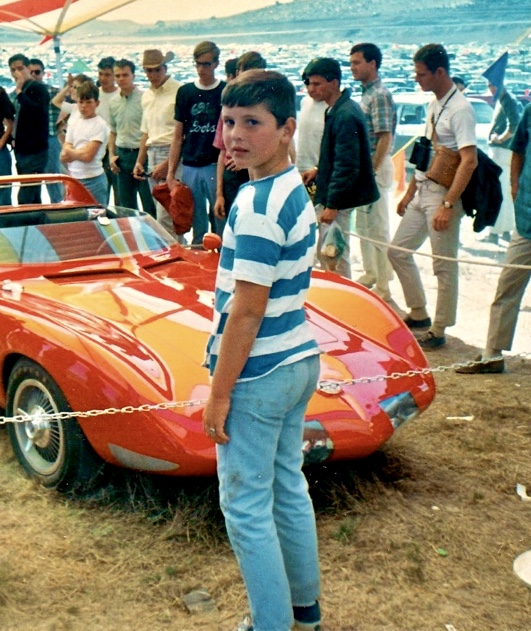
When did the Motorworks Revival begin its transformation from a humble get together during Monterey Car Week to a party that can only be described as one of the most extravagant of its kind?
“Well, thank you for saying that, especially with your extravagant website, which, not pandering here, is incredible. It really is an amazing job you and your team do on that site; it is above all, it really is. I used to host [the event], when I had my finish restoration business [at] the Monterey Airport, [the party was] basically customer appreciation night. We would have a barbecue. Throughout the year it was really Car Week that brought everyone together, so that’s when my customers would be [in Monterey altogether]. We would prep a lot of cars for various shows and races, etc. And it went from a somewhat of an intimate shop party to [something] a little bigger than that when I partnered up with my neighbor at the Monterey Airport, which was Alan Shugart. Alan, at the time, was the Principal at SeaGate Industries. He had the patent on the hard drive. He also owned a couple private planes and he had a wonderful hanger next to my business. I needed a little more room if I was to expand our get-together, so I asked [Alan] if he [would] mind if we utilized his hanger and maybe had the airplanes on display. Realizing that car guys and plane guys are kind of the same all-in-one, and gals. In the early ’90s, the very first year that we moved it into the hanger and still incorporated my shop, both airplanes [on display were] on a Type-135 charter. It turned out that the first year that we integrated Alan’s hanger, one of our guests chartered a three month European trip utilizing their jet. So all of a sudden [the party] became like a business entity, it’s like ‘hey this is great, can we do this again next year.’ We brought the right people to the table, well the pivotal year for us was 1997 when Gulfstream had caught wind of our guest list, and back then we were maybe a 1,000 [to] 1,500 people, which is still a fair amount of people to entertain. We had vintage airplanes, the Shugart’s Astra jets on display, and a couple other airplanes. But Gulfstream contacted me and said ‘we have this new plane, it’s not quite finished yet, but we know a couple of your guests are going to be attending—we can’t get to these people.’ And I am thinking ‘Gulfstream can’t get to these people, but I can?’ I mean, this [was] a very humbling experience. Well, needless to say they showed up with a then, new GV. [The aircraft] was [still] green on the inside; [the interior] hadn’t even been outfitted, but the GV when it was introduced was a big deal, it was a game changer in the long-distance private plane sector. It’s like, ‘this is phenomenal, I can’t believe there’s a Gulfstream at our event, and a new one that no one has seen yet.’ Admiral Alan Shepard, the astronaut, was one of our guests and [at the time] I didn’t realize he was a Gulfstream test pilot. So I am standing next to him with his wife and he is flipping out over this new Gulfstream. He goes, ‘well I’ve heard of this, but I can’t believe it’s here.’ Next thing I know he is in the cockpit with their chief test pilot, a guy named Captain Bob Osbolt—I’ll always remember him—who the thrill of his lifetime was having Alan Shepard sitting in his cockpit. And Alan is telling stories about taking his daughters for zero gravity excursions in the early Gulfstreams, the ones and twos. This is all happening at a party; what is even more comical, and is not really funny because it’s business, but they sold two planes that night. So all of a sudden not only did my wife and I pioneer this concept of integrating aviation and automotive businesses together, but we were instantly being credited with having come up with a pretty darn good idea. Not only has it been good for us because we’ve been able to maintain this now for 28 years, but we’re knocked off all across the country; there isn’t a major car show that takes place now that doesn’t have a hanger party prior to it. And everyone of them gets measured against what we do in Monterey in August and we are really proud of that. It’s flattering that these other entities will even reach out to us and say ‘we just want to let you know we are inspired by what you do in Monterey and that’s why we do this here.’ It keeps us on our toes, as well. So, every year we try to evolve the event; it’s become more of a food and wine affair now. We are really catering towards the lifestyles of the people that bother to attend Monterey during August; it’s a well traveled group [and] they know what they are looking at, it’s a discerning audience, needless to say. But, 1997 was pivotal in that that’s the year we kinda broke out. Monterey Jet Center was just being built, and we [discovered] that the original building, Alan Shugart’s building, was the original United Airlines terminal. It’s an old facility and we thought ‘wow there is a brand new, fixed base operator going up down the way. I should probably reach out and get the chance to maybe know who these new owners are.’ That’s when I met Carl Panattoni and Jack Van Valkenburg, who have obviously become partners over the years and two of the nicest guys on the planet. Monterey Jet Center is an amazing facility and in the year 2000 we moved the event to the Monterey Jet Center and we’ve been there ever since.”
What are some of the greatest challenges to hosting an epic party with supercars, private jets, and over 3,000 guests?
“There [are] a few moving parts. One of the most difficult things is the fact that after September 11th we are on the inside of [a] FAA/TSA controlled space; and to be able to throw a party like we do inside of controlled space, that’s very tricky. We have elements of security there that none of our guests see, but we work all year long in terms of meeting the requirements of the FAA and the TSA, and the Monterey Airport Police, as well. We also have a lot of high-profile guests that travel with their own security teams. There [are] lots of elements involved here. There’s a lot of powerful folks that come to this event and security has always been a big concern of ours and we’ve always treated it very [seriously], and fortunately to this day we’ve done a pretty good job of doing that. So that’s certainly one of the challenges. It’s been an interesting challenge to transform it from what used to be everyone there was an invited guest to transitioning it into a viable business. You know, we weren’t going to be able to continue to entertain the world as our personal guests indefinitely; we needed to make a business out of it. And when companies like Gulfstream and our other airplane company sponsors are doing business at the event it seemed like ‘well maybe we can find a way to put together some sponsorship opportunities that are reasonable and have good ROIs.’ So that’s an interesting transformation because we kinda took it on the chin a little bit from some people. So [people say] ‘well, I used to come to that thing as your guest.’ Well, [that] actually got to us, which is common. I had an uncle who had a set of towels in his guest bathroom and it said ‘friends: yes, friends of friends: no.’ And I will never forget that because we were getting friend of friended to death. ‘Hey thanks for the invite, I’ve got six house guests—I’m bringing them’ That’s really hard to account for catering and, you know, it’s just tricky. So my response to that has always been ‘gosh, when’s the last time you brought a group of friends to a wedding you were invited to.’ Like you just don’t do that, right? But, you know, people are excited [and] we are flattered that people want to be there, but we really had to make a business out of it. It had to have accountability and there’s a value to those tickets and, you know, what’s important to us is to deliver. Yes, it is an expensive ticket; but then again, it’s a unique experience. So, there are a lot of challenges. Long answer to a short question.”
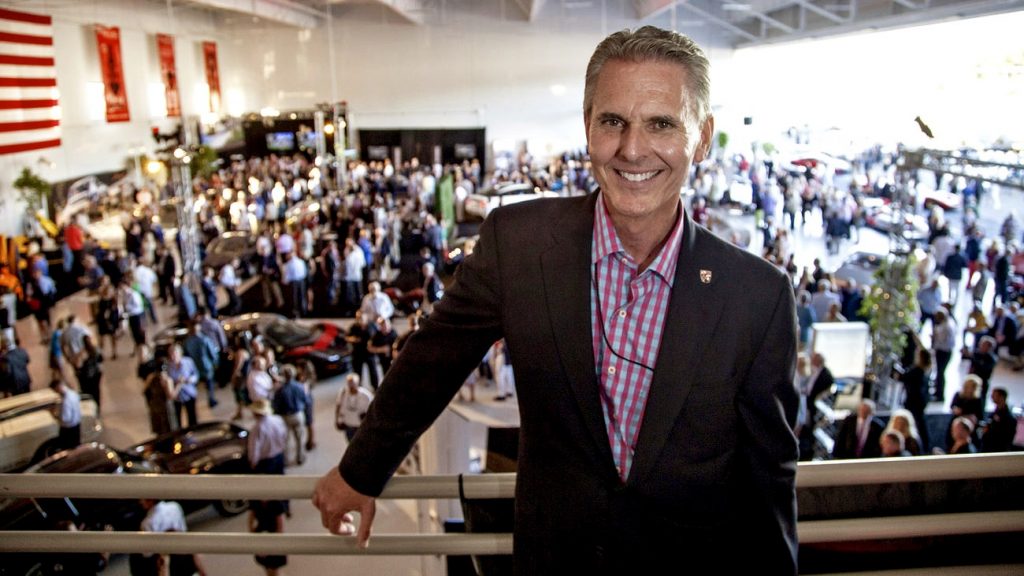
Is there anything in particular that you would like to share regarding the upcoming Motorworks Revival and the Quail, A Motorsports Gathering?
“Just that I am really proud of both. I would like to give a special thanks to my wife Molly who is Vice President of McCall Events and runs all the marketing for the Motorworks Revival; in addition, Tiffani Munsey, our Event Manager, does a superb job and the event would not be the same without these two gals. I mentioned earlier that the team that puts on the Quail, A Motorsports Gathering, the Peninsula Signature Events Team, run by Courtney Ferrante, is really impressive. I am amazed at what they do, quite frankly, that’s an event owned by the Peninsula Hotel Group and it’s phenomenal what they put together. I’m the resident car guy as the Director of Motorsports, so what I do is relatively easy compared to what they do in terms of the daily work as well as the implementation of it all. You know, I look forward to [these events] every year. My wife and I are locals, we don’t just roll into town, produce a couple of events and leave. We are part of this community [and] we hire a lot of local people; that’s always first and foremost with us. We take a lot of pride in having a stake during Car Week. It’s really satisfying to think that we both grew up here and we both have something to contribute during that period of time. For any of the locals here that complain about Car Week, and we’re aware that there has been a little bit of add over the years, I can only emphasize that there is such a financial impact, a positive one, to this community that to be able to endure some car enthusiasts for 10 days is worth the sacrifice. And to that point, interesting timing right now, I’m not hearing about anyone complaining about a quarter-of-a-million golf fans being in town. Not hearing any complaints, which is good [because] we shouldn’t be complaining, we should be grateful that people choose to flock to this area. We’re pretty fortunate to be able to live here.”
How would you describe Monterey Car Week in just a few words?
“That’s tricky. So, there’s a wonderful expression I heard years ago about Disneyland, and that is you’ll hear people complain that there is too much to do during Car Week, and you know during the old days there was like two or three things to do. Now you really have to ala-carte pick what it is that you want to participate in, but there is this great expression that applies to Disneyland, which is that ‘I have never heard anyone complain that there’s too many rides there.’ So, I think Car Week is, in a nutshell, a sensory overload of incredible people that come from all over the world. They bring their interests and their talents with them and they share them. The car world is not shared in a vacuum, it really isn’t. These are people out driving their cars, they’re out showing their cars, they’re racing their cars, they’re buying cars, they’re selling their cars… It’s an exciting period of time. So to put that into a few words is, as you can tell, [is giving me] a hard time. It’s a true extravaganza for car enthusiasts.”
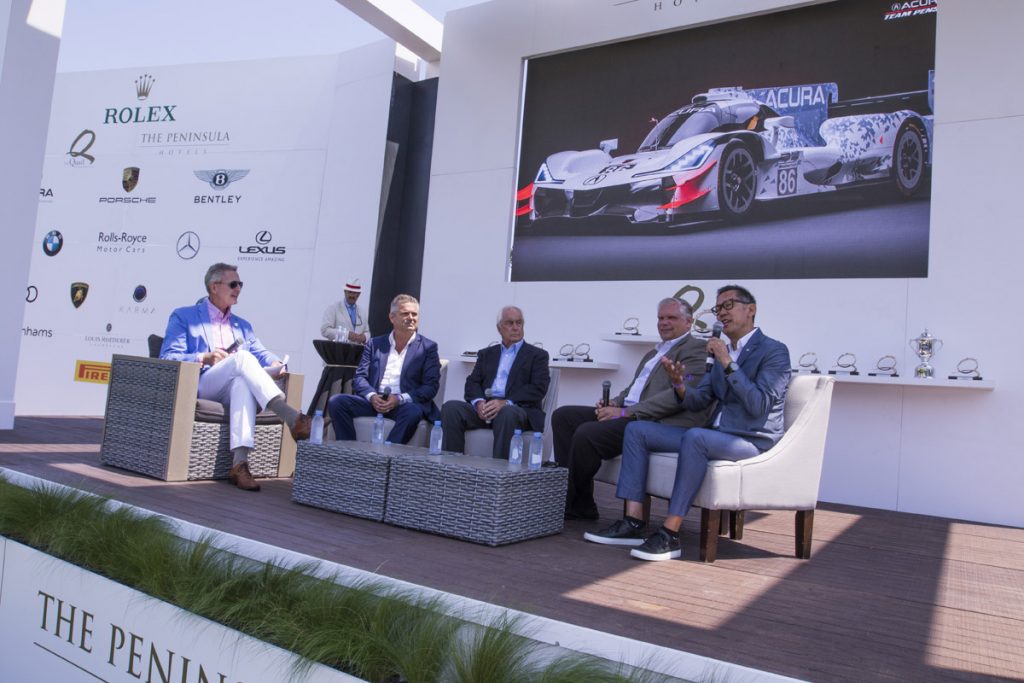
All those who’ve enjoyed the privilege of attending The Quail a Motorsports Gathering remark that there really isn’t anything like it. Tell us more about the inspiration for this magnificent event and how it exactly came to be a reality?
“Well, here we are 16 years into the Quail and there isn’t anything else like it to this day. You know, people have had 16 years to copy it; it hasn’t been replicated anywhere else and to me that is a true testament to a couple things. One is, it’s a very difficult event to produce and, again, more credit in the world goes to the Peninsula Signature Events Department. But it also, kind of stands on its own as a result. The idea that everybody is a VIP. The Peninsula Hotels are into service; that’s their main forte, and they certainly do that. Everyone there does feel like a welcomed, invited guest. I think the fact that it hasn’t been knocked off, says everything about the event itself, it’s a true lifestyle event. I said years ago, that it’s like going to a five-star restaurant and having a car show break out. People are there because they want to be, there is a general level of enthusiasm that is completely real. It’s just refreshing and to have it to where everyone is a VIP, that has a special feeling to it. I learned years ago, you can’t please the world, you just can’t. I don’t care how hard you try, you are never going to be able to please everybody. So, pick a sector that you can excel in and do that. And that’s exactly what the Quail is all about.”
What are your top tips for doing Monterey Car Week right?
“Pace yourself. As I mentioned earlier, pick and choose what it is that you want to do. If you happen to have access to a motorcycle, you’d be doing yourself a huge favor to ship a bike out. I think the best way to do Car Week is, quite frankly, rent a house and spend more than the week. Don’t just get caught up in the hotel five-night minimum. Local hotels might not be happy with me saying this, but… Send your friends to the hotels, take a house for a month, make it a true holiday and book end Car Week with being here before it starts and being here after it starts. You’ll get a true sense for what the Monterey Peninsula is all about; it’s not critical mass with congestion that takes place for a ten-day period because of Car Week. I think, as we all know, it’s a really special place to live; and to be able to take that in with a family vacation, bring a motorcycle or ship one out, so that you can tool around easily when it is congested. And most importantly, pick and choose what it is that you want to do. You can’t go to every auction, you really can’t. You can’t really go to every show, you can’t go to every race. So, just pick a few things that you really want to immerse yourself in and don’t feel like you are missing out on anything else. That’s what wonderful websites are for.”
Has your personal taste in cars and motorcycles evolved over the years? If so, how?
“It really hasn’t changed that much. Getting an early start in cars, when I think about it, I have always been able to afford what it is that I like. I’ve always worked hard, I’ve had multiple jobs, I’ve always had targets on the horizon and goals. I’ve also kept my expectations for my interest in cars very real. Having the experiences that I’ve had with companies, such as Christie’s, etc. I have been around some really amazing, priceless cars that just personally have no interest to me in terms of ownership. I can appreciate them for what they are, but I have no desire to own something that’s worth more than my house. I’m just not that kind of guy. I really like driving cars, so my cars are really approachable and normal and fun. That’s my common denominator. The same for my bikes, they are just fun.”
What is the most cherished vehicle in your personal collection?
“So that question of which is your favorite child, though I don’t have children; that’s a loaded question. When I was going to high school I was really influenced by a guy named Pete Brock, who had an enterprise. It was called Brock Racing Enterprises (BRE). Pete is a guy that was racing Datsun 510s against Alfa Romeos, BMWs, and the like. Growing [up] at Laguna Seca, I used to go out there and cherish those Trans-Am Races. I was always intrigued by the Datsun 510s because here was an economy car that no one really heard of in the States in the ’70s, yet [Brock] was beating known brands like Alfa Romeo and BMW that were much more expensive cars. I was mesmerized by that to the point where my first car was a Datsun 510. I have to admit though, while I owned the Datsun 510, that I bought it [at]16 years old and modified heavily to replicate one of Pete Brock’s cars. The car I always wanted was a 240Z; I just thought they were the coolest things ever. This gentlemen Bob Sherry was Vice-President of SCRAMP and his son Pete and I were close friends and his mom, Julie had a 240Z. I just thought this car [looked] like a Ferrari. Again, nobody really knew what Datsun was—so many years ago I added a 240Z to my little stable. When I get into that car it just makes me think ‘okay, I didn’t have this in high school, but I have it now and I’m good with that.’ It just makes me smile. It’s a car that actually [is] starting to get recognized, one just sold for a world record the other day, on the internet of all things. People are starting to [think] ‘why is a 240Z worth so much less than a Porsche 911 of the same era when in fact [the 240Z] probably [had] more [of an] impact on the car scene than the 911 did at that time?’ Those days are starting to end; the Zs are starting to get recognized now. And so of course, I’ve lowered mine and put triple Webers on it with a hot cam and headers and all that kind of stuff. So, It’s a fun car, I love it. I’m going to say that’s the car I kind of lean towards.”
In your opinion, what is the most important aspect to consider when purchasing a classic car or motorcycle?
“I think there’s only one really important thing, actually two. You’ve got to be able to afford it. Don’t cut into the mortgage money because of the car you desire, right? So, you’ve got to be sensible about it, but to that point, buy what you love. This idea of what it’s going to be worth later; if that happens great, if it doesn’t, so be it. [It’s really about] the joy of ownership. I have actually been asked that question several times and I’ve come up with a funny analogy; I don’t know if it’s going to make any sense, but when you take a trip, when you buy your tickets for the airplane and the hotel, and all the experiences, there is zero expectations that you’re going to get any of that money back. It’s the experience that you’re paying for, so I feel the same way about cars and motorcycles. You know, you [should] be smart about your purchase; you don’t want to be the fool who fell off the turnip truck and paid way too much money for something. But be smart about buying what you’re buying. If it goes up in value, great; if it doesn’t, what was the use of it worth? How many smiles did that put on your face? It has a value to it, so factor that in. You don’t want to be a fool about it, but at the same time you can have a little reckless abandon if you put a true value on the use of it. I do, I really do. Bruce Canepa has a great expression, a friend of mine up the coast, says ‘you can’t drive art.’ I think he credits that from Jerry Seinfeld, actually. When you look at people who park money in investment art, in an investment car—it’s like, at least you get to drive the car. Worst case scenario is that the market fell out, the car is worth half of what you paid for it, but hey, you put gas into it and go have some fun, That’s not so bad.”
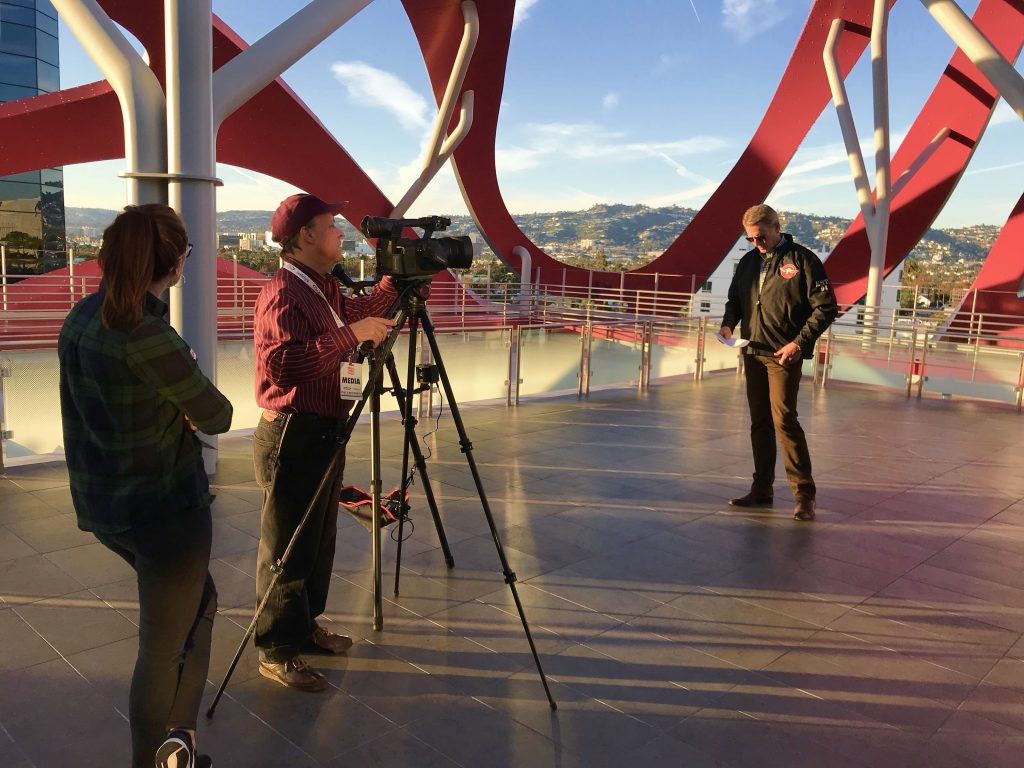
Is there anything that you can share with us regarding your upcoming television series on the History Channel, titled “The Road to Provenance”?
“Yeah, I’m very excited. So, I’ve been in and out of different television productions for most of my career, either as someone who has been interviewed or contributed in one way or another. This show all came about in an odd way, [in] that I’ve been featured in a couple of the episodes, the early episodes. Then got asked, ‘will you be interested in hosting the show?’ And I thought ‘well I’m not a TV host, I don’t know what I’m doing.’ Then I come to find out that’s exactly what they were looking for—they were looking for someone who doesn’t need cue cards and it’s just first-hand knowledge or whatever and driven by the passion of it all. I find that it’s a refreshing show, in my opinion, and the reason I was so eager to be involved with it is that I’m finding there’s room [for this type of show]. This is going to be a History Channel production, so this is not landing in the normal course. There are plenty of people out there looking for content that’s a little bit more in depth than just talking about what cars are worth. Our goal is to find out why cars are worth what they are, and why people are interested in collecting what they collect. And it’s not just cars, it’s timepieces, it’s aircrafts, it’s boats, it’s art, it’s all that. So, provenance is an interesting word. I’ve met some very interesting people along the way, quite frankly, most of the [27] episodes we’ve already shot. There are a lot of people that I already know, but a few of them I don’t. I’m just fascinated to walk into the world of these people that you find out they’ve done something right in their life to where it forged the ability to collect something, anything. And then you find out why they are collecting what they are collecting, and it’s just fascinating, it just is. It’s kind of a personal glimpse into people’s lives. There used to be a show called ‘Pinnacle’ that I remember watching on public television years ago. I forget who the interviewer was, but it was this very well-informed guy. He would sit with Warren Buffet in his backyard on milk crates and they would just talk about life. And that’s kind of what this show is like; we are not finding out where the money came from that bought the… It’s got nothing to do with that. It’s like, ‘why is this interesting to you?’ You’d be surprised at the similarities amongst people, as to why they collect what they collect. It’s neat, it’s really, really neat. So, [it’s an] exciting show to be involved with, and [I] can’t wait for it to air in the Fall. We filmed four more introductions to it, just recently. We are into season two right now, so lots of fun.”
Tell us more about your involvement with the California Highway Patrol 11-99 Foundation.
“So a really good friend of mine, a guy named Ned Tanen, who used to be President of Paramount Pictures; Ned’s a part-time Carmel Highlands resident. I used to look after his car interest years ago, I’m talking about 30 years ago, or so. He’s a guy that first exposed me to the 11-99 Foundation; I [had seen] some license plate frames, [but] really didn’t know what it was. [Ned Tanen] said, ‘do yourself a favor, you know Bruce Meyer, right?’ And I said, ‘yeah, I know Bruce.’ Bruce has been a friend [of mine], I [actually] just got back from the Isle of Man with [him]. Bruce is a driving force behind that foundation. And I sat down with him one day to learn what the foundation was all about. I had friends who were California Highway Patrol Officers. I always assumed when there was an incident involving an officer, being a state agency, it was just an assumption that everything must be taken care of, right? Well, come to find out, that there’s a huge lag time when an officer is killed in the line of duty. There is a huge lag time between any kind of financial benefits that go to the family—and to me, that just doesn’t feel right. I think the way I feel is shared between many car enthusiasts. Those of us out there that may have [bent] the rules a few times on the public roads with cars, we all appreciate what the Highway Patrol does. It’s a job I would never want and particularly nowadays. I mean the whole perspective towards law enforcement has changed so much in this country, yet these folks are strapping on a badge and a gun everyday and they may not come home from work. And so, to get familiar with this Foundation and see the good it does. It was literally a check that would arrive on the doorstep of a fallen officer’s family. It’s evolved from that, into a now, well-managed fund that kicks out scholarships as well as death benefits. We distribute $2.5 million a year in scholarships to family member’s of Highway Patrol Officers. So, we are making a difference not just in catastrophic loss, but we are [also] making a difference in officers’ and CHP employees’ families’ futures. It really feels good. I also have featured that charity at our event at the Jet Center, forever. And the reason why, is I feel like anytime you get a group of successful people who have chosen to come to Monterey Car Week, something good has to be coming from it, it can’t just be a party with jets and cars and fancy food—something good needs to be happening that goes beyond the night. That’s why we utilize that night as a fundraiser for the 11-99 Foundation. We do the same thing for the Quail and it’s a genuine, bonafide fundraiser. We don’t take a percentage of what is raised. It’s monies that go straight to the Foundation. A lot of events will hold a raffle where they will give a car away, then you will find out that the venue is actually taking part of it—that’s not charity in my book. So giving them the opportunity to meet influential people that become donors has been a real thrill. Personally, I’m really elated to be part of the Foundation. It’s heartwarming, unfortunately we lose officers every year, and it’ll be like that. It’s a tough job, a dangerous job. It feels good to think this Foundation is doing something that can help. The 11-99 Foundation has its own website [called]: CHP11-99.org. It’s a really noble cause, there’s no doubt about it. I go up to the memorial [in Sacramento] every year in May. [As a] matter of fact, the local guy, Joe Farrow, whose brother was [General Manager] down at the Jaguar dealership; Joe was a gate guard at Pebble Beach. He became Commissioner of the California Highway Patrol under Arnold Schwarzenegger’s appointment. I had my Irish green 911 and I blew past the [Pebble Beach] gate, and there [he] was. And he was a car guy, he had a ’75 Carrera actually, Joe did. He held every position with California Highway Patrol and ended up as the Commissioner. [He] recently retired as the Commissioner, but he is now the Chief of Police in Davis. He still carries a gun and still wears a badge—he’s a great guy. He’ll be coming to the event this year actually. We’ll see him there.”
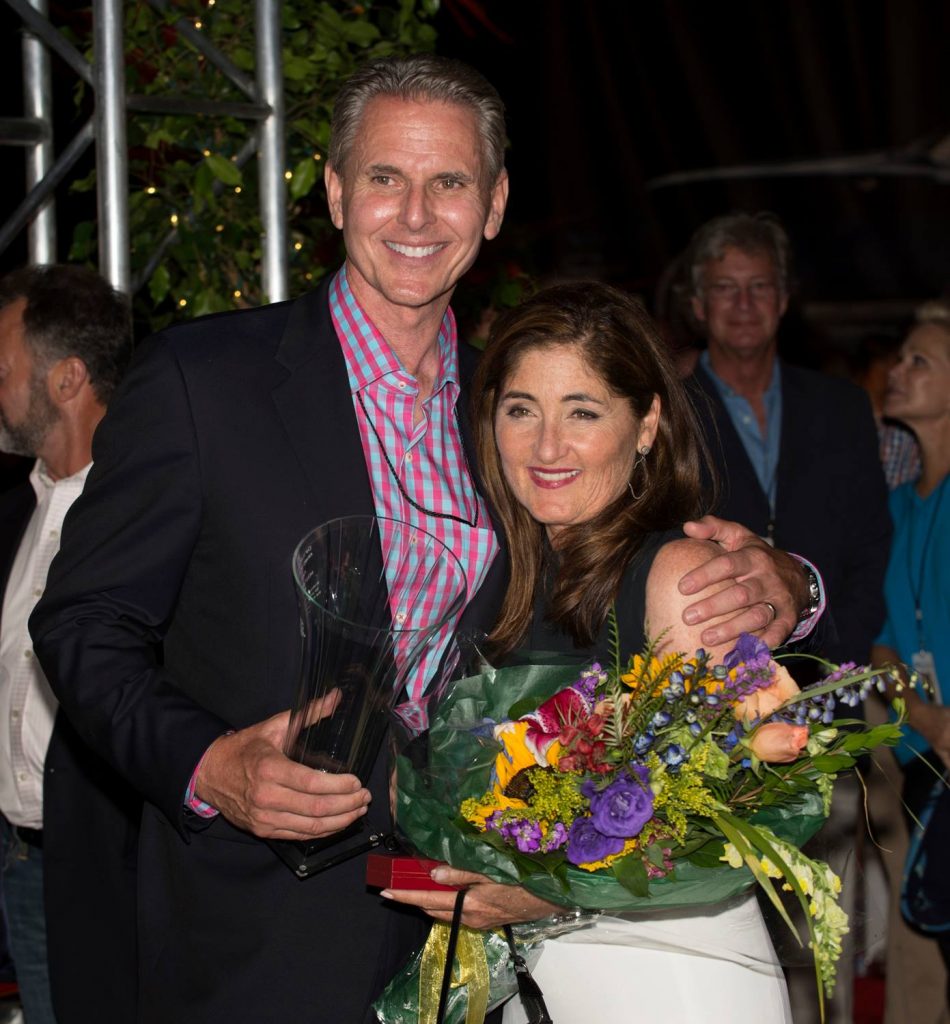
With such a busy schedule, what is a day in the life of Gordon McCall like?
“I am very routine-oriented, but with a lot of flexibility—if that makes any sense. I cycle a lot; that keeps my head screwed on straight, not just [riding] motorcycles but I ride road bikes. I’ve competed my whole life; I [still] have my Tenspeed, I mean who still has their Tenspeed, right? That bike really led the way for me, that’s what I segwayed into a Honda 90. I find that I was one of those kids they probably didn’t have a name for at the time. I think they call it ADD, or something to that effect. I was one of those kids that [on] the playground, in the sandpit, I had an off-road race going on with Matchbox cars [and] a war going on with mini tanks and these little tanks and jeeps. I’d [also] have an air strip with the airplanes going… I had like five things going on at one time. That was me as a kid and that’s me as an adult; nothing has changed. I’m kind of all over the map, but at the same time pretty focused on what I do. If what I do is related to the other things I do, I’m good. It would be weird if I was in the medical world and the aviation [world]. That wouldn’t work, but my wife [Molly] and I are kind of quiet people. As I’ve mentioned we live out in Carmel Valley. We’ve got a great little German Shorthaired Pointer, it’s our third one. [My wife’s] a professional artist and does our marketing, as well. But we’re just kind of a couple of quiet people that are grateful to have grown up here. I can switch gears, which I need to professionally. I have no problem throwing myself in the arena and playing that role, as well. And it’s genuine; I love people. I find that the businesses that I’m in, they’re really people businesses. I mean cars, airplanes, motorcycles and all that. Yeah, those are things, but it’s really [about the] people. That’s the part that I really love the most, it’s neat”
Lastly, we’ve heard that you are developing an incredible space for car collectors. With that said, can you tell us a little more about the Monterey Motorsport Park development?
“Yeah, so that’s the answer to a lot of peoples’ problems, particularly here on the Monterey Peninsula. Around here, you’re lucky to get a two-car garage. Well, what’ll you do if you’re into cars, or bikes, or really anything? I don’t know what’ll you do if you have two full-sized cars, but a lot of the Carmel garages are very limited in that way. So, we’ve learned that there’s a definite market for this. Our first development Garage Unlimited sold out immediately. This is a derivative of that; Monterey Motorsport Park is a spin-off of Garage Unlimited. It’s an incredible location on Highway 68, it could not be more convenient: two minutes to the airport, 10 minutes to the track. The tax advantages to owning your own space versus renting your own space is huge, and I think it’s a ramification of the demand that is in need around [here]. There [are] so many car people that choose to call [the Monterey Peninsula] home now, and unless you’ve got a big house out in the [Santa Lucia Preserve] or [if] you’re fortunate enough to build a basement in your house, out in the forest or something. If you’ve got cars, where are you suppose to put them? Well, this is the answer. We’re sixty percent sold out, we’ve got a few months left in construction and its coming along really well. Most importantly, the people who are buying units in this building are very interesting people—and that’s going to be fun, too. My rule of thumb regarding a club atmosphere there was that around here people already belonged to the clubs they wanted to belong to. They aren’t looking for another club, so why spend the money on a common area space. I mean your space is your common area space. If you want to have a get-together, just invite everybody into your space. It’s a real solution to a pretty serious problem. These hangers at the airport, for years, have been full of cars. They’re cracking down on that and actually there’s a prevision, and I’m not saying this as a partner in a real estate development, I’m just saying this as a kind of fact. When they did the runway safety extensions here at the airport, that was an FAA nationally funded affair, there was a prevision in there to enforce the use of hangers to be restricted to aircraft only. Which, when you think about it, makes nothing but sense. If an airplane can get to it, it should have an airplane in it—not a bunch of cars. That’s kinda putting a few folks out, which are steering them over to what we have to offer because you can’t park an airplane in our space. Airplanes are limited to taxiways, accessibility. I think with that, it’s proven that there’s a bunch of tenants that have been inquiring about: ‘I need to get my cars out of the airport.’ Every unit has a mezzanine in it, so every unit has the ability to have a getaway office, a satellite office, home office, whatever you want to call it. We have been approved to multiple business uses. For instance, wholesale and retail dealer licenses have been approved by the State, which is a big deal actually. The State’s very strict; they don’t want any kind of discrimination going on and they don’t want to think that you can lock somebody out of access. So, they’ve approved our facility for car dealership licenses. They range from 600 square feet up to about 2700 square feet. Once you’re in and once your business is approved, you’re free to do what you want. It’s a great opportunity, it really is. So many people around here have storage units tucked away. They’ve got Wifi, they’ve got their car collection, but they’re in a storage unit. It’s like ‘you pay your rent, you go month to month and there you are.’ Well, here’s your chance to own a place and actually have a nice address that goes along with it.”
Where can we follow you? And also, where can we purchase tickets to McCall’s Motorworks Revival?
“So, I’m on Instagram at: @gordonmccall75, every once in awhile I put a picture up there, and the McCall’s Motorworks Revival is on Instagram at: @mccallsmotorworksrevival. The easiest way to chase us down [for tickets] is on McCallEvents.com.”
All Images courtesy of Gordon McCall

